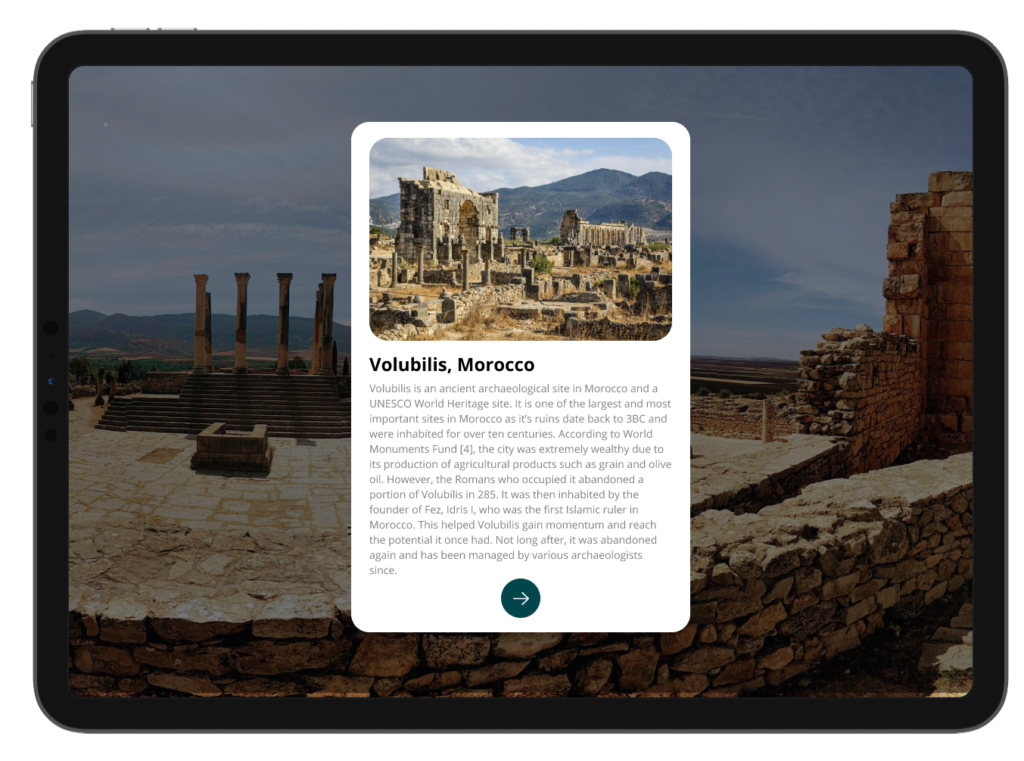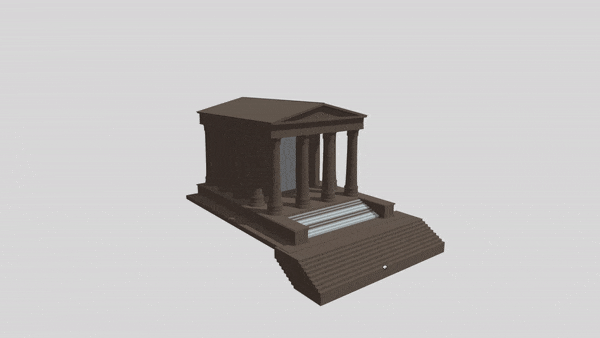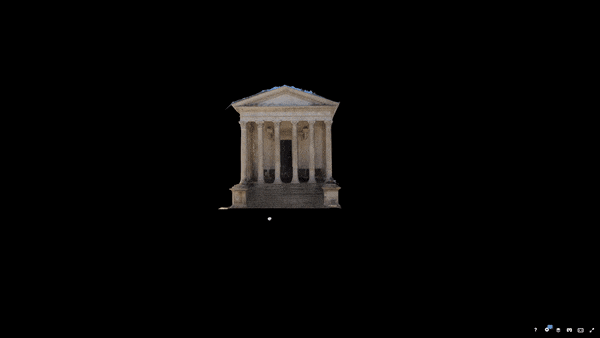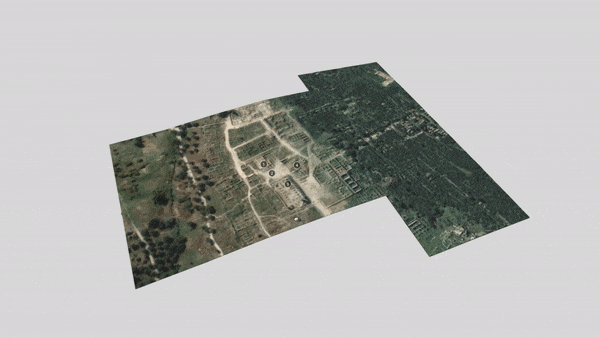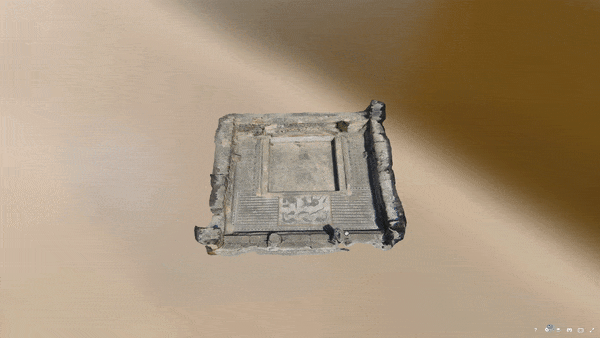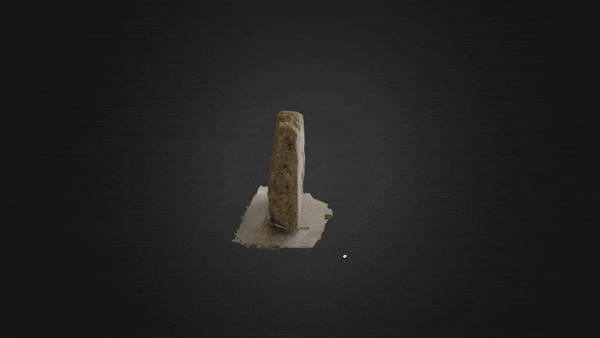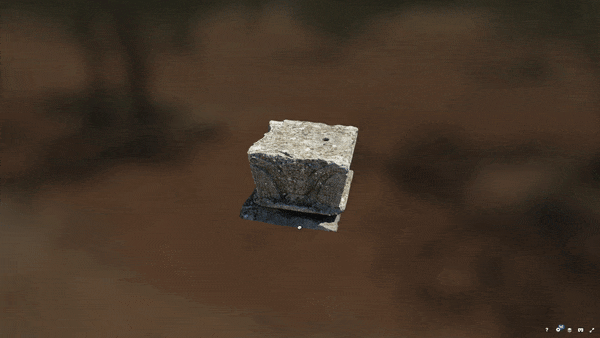
Volubilis
Explore one of Morocco’s best-preserved Roman ruins, dating back to the 3rd century

History of Volubilis

Background of Volubilis
Volubilis is undeniably a significant site as one of Morocco’s best-preserved Roman ruins, dating back to the 3rd century BC and a UNESCO World Heritage site. Because of its solitude and the fact that it hasn’t been inhabited in nearly 1,000 years, it has a high level of reputation and authenticity. Both in terms of ruins and epigraphic evidence, it is one of North Africa’s richest sites in our world today as the archaeological ruins of this site have been formed by many civilisations over time. The city has been standing for ten centuries from ancient times to the Christian and Islamic periods. Volubilis is a fortified city built on a commanding site at the foot of the Jebel Zerhoun, according to the UNESCO World Heritage List. The interface between Roman and indigenous cultures is graphically demonstrated on the pillars and the ancient town’s architecture and architectural ornamentation were both inspired by African and Christian influences. Just about half of Volubilis has been excavated and contains a variety of significant public and private structures.
“Cultural heritage is critical to preserving our identity. It provides us with an irrefutable connection to the past – to those social ideals, ideologies, practices, and rituals – allowing us to identify with others and strengthen our sense of identity, patriotism, and national pride.”
US Embassy, phillipines

Interactive Prototypes
Virtual Reality App
On the left, a video of the virtual reality app can be seen. This app takes you on a virtual tour of the site as it is now and let’s you experience it both audibly and visually. With the use of impressive remastering technologies, you can witness the historical city first-hand through this 360-degree experience, seeing more specifics about each building and artefact from that period. The 360-degree view has been generated by stitching together several panoramic photos of the site taken from various angles giving the viewers the ability to zoom in and out.
More images of the user interfaces can be seen below.


Augmented Reality App
On the right, a video of the augmented reality app can be viewed. This app can only be used on-site and is similar to the virtual reality app in the sense it allows you to see the site as it is now as well as it was in its prime. It is available from your own smartphone or tablet and allows you to control your own personal experience. You will receive an access code to the downloaded app upon admission before you start exploring. You will be instructed to hold up your phone in front of a building or artefact and have the option to “reconstruct” it. Instead of viewing the ruins as they are, you can now have a 3D digital model visible in the correct position of the original building. This type of interaction gives you a sense of independence and control as you can take your time with each building and artefact without worrying about any time constrictions. The video shows the “reconstruction” of the Capitoline Temple.

Virtual Reality Headset Tour
Virtual reality headsets are an incredible way to immerse yourself in a realistic and capturing experience. Although both applications are substantial on their own, the addition of an immersive virtual reality experience would really transform views of Volubilis and Morocco as a whole. Below you can see a video taking you on a virtual tour of a reconstructed roman house from Volubilis. The original video can be found here. You will be transported into a brightly decorated home, adorned with mosaics, statues, and high pillars, giving you a first-hand view of how they lived during these times. Press play to experience the virtual reality tour for yourself.

3D Models

Modelling The Capitoline Temple
A 3D model is an extremely effective way of interacting with artefacts, buildings and maintaining a digital record of cultural heritage. Another benefit of 3D models is that they can tell us what an artefact, building or site would have looked like at the time of is inception.
As part of the digital virtual exhibition, a 3D model of what the Capitoline Temple may have looked like has been created to take all viewers back in time. The temple is extremely classic and utilises the traditional roman imperial architecture of the time. The pointed roof and large steps depict just how grand it was and why people from all over the world take pictures in between the pillars on its famous steps.
The two gifs below link to interactive 3D models waiting to be explored. The first gif on the left is the 3D model of The Capitoline Temple, whilst the gif on the right is a model of The Maison Carrée, which is an ancient Roman temple in Nîmes, southern France. It is known as one of the best preserved Roman temples to survive in the territory of the former Roman Empire. The comparison between the two show extreme similarities and it can be used as a starting point for any future reconstructions that may take place.
The 3D models below show various associations with Volubilis, including a satellite view of the city and related artefacts.
This exhibit is a fantastic way to conserve a historically significant site using cutting-edge technology. The use of virtual and augmented reality helps us to stay connected to the past by bringing information forward, putting regions and relics in their proper sense, and introducing life and imagination into cultural heritage sites, it will enrich all visitors’ experience and improve awareness and knowledge.
Virtual Reality App creator: pk59
Augmented Reality App creator: pk59
Edited VR Youtube video: pk59
Youtube video content: Deva-Putra Wardiman
Capitoline and Satellite 3D models: pk59
Other 3D models: Sketchfab.com
